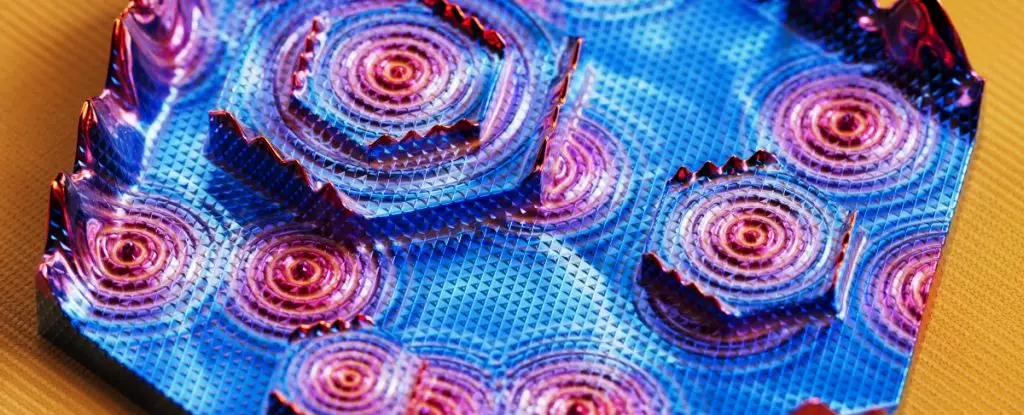In a recent study exploring the world of quantum topology, physicists stumbled upon a groundbreaking discovery on the surface of an arsenic crystal. This discovery shocked the scientific community, as it revealed a rare hybrid of two distinct quantum states, each describing a different form of current. Lead physicist M. Zahid Hasan of Princeton University expressed his surprise, stating that this finding was entirely unexpected and had not been predicted by any existing theories.
Topology has been gaining significance in the study of materials with wave-like properties, known as quantum matter. It deals with the geometric structures that remain unchanged when bent or distorted, but may alter when ruptured or penetrated. This branch of physics has the potential to influence the quantum behavior of materials in various ways. Researchers are particularly interested in exploring compounds based on elements like bismuth, which serve as efficient topological insulators. These materials have an outer layer capable of conducting activity, while the interior remains an insulator, allowing electrons on the surface and edges to move freely.
Exploring Arsenic as a Topological Insulator
While bismuth has been widely used in the study of topological insulators, scientists have recently turned their attention to arsenic due to its unique properties. Unlike bismuth, arsenic can be grown in a cleaner form and is simpler to prepare. In their experiment, researchers grew crystals of gray arsenic, observed their properties under the influence of magnetic fields, and examined them using advanced techniques like scanning tunneling microscopy (STM) and photoemission spectroscopy.
Surprising Hybrid Quantum States
During their analysis, physicists discovered not only the expected surface states but also a set of edge states that had never been observed alongside surface states before. This unexpected finding led them to conclude that they were witnessing a unique hybrid state that defied existing classifications. This discovery challenges conventional notions of bulk band structures and showcases how certain materials can simultaneously exhibit characteristics of multiple topological classes.
The implications of this discovery are vast, as it could potentially lead to the development of new quantum materials and technologies. The newfound understanding of arsenic’s unique topology opens up opportunities for creating innovative topological materials and quantum devices that were previously inaccessible. This breakthrough has the potential to revolutionize quantum physics research and pave the way for advancements in technologies such as quantum computing.
The unexpected discovery on the surface of an arsenic crystal sheds light on the complex world of quantum topology and its implications for material science and technology. This groundbreaking research challenges conventional beliefs and opens up new avenues for exploration in the realm of quantum physics.

Leave a Reply